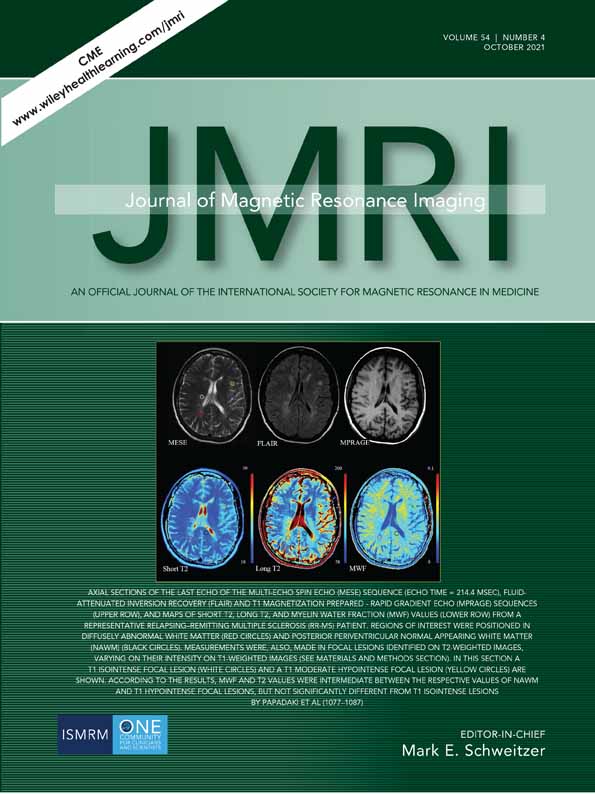Quantity and Morphology of Perivascular Spaces: Associations With Vascular Risk Factors and Cerebral Small Vessel Disease
Abstract
Background
Perivascular spaces (PVSs) are important component of the brain glymphatic system. While visual rating has been widely used to assess PVS, computational measures may have higher sensitivity for capturing PVS characteristics under disease conditions.
Purpose
To compute quantitative and morphological PVS features and to assess their associations with vascular risk factors and cerebral small vessel disease (CSVD).
Study Type
Prospective.
Population
One hundred sixty-one middle-aged/later middle-aged subjects (age = 60.4 ± 7.3).
Sequence
3D T1-weighted, T2-weighted and T2-FLAIR sequences, and susceptibility-weighted multiecho gradient-echo sequence on a 3 T scanner.
Assessment
Automated PVS segmentation was performed on sub-millimeter T2-weighted images. Quantitative and morphological PVS features were calculated in white matter (WM) and basal ganglia (BG) regions, including volume, count, size, length (Lmaj), width (Lmin), and linearity. Visual PVS scores were also acquired for comparison.
Statistical Tests
Simple and multiple linear regression analyses were used to explore the associations among variables.
Results
WM-PVS visual score and count were associated with hypertension (β = 0.161, P < 0.05; β = 0.193, P < 0.05), as were BG-PVS rating score, volume, count and Lmin (β = 0.197, P < 0.05; β = 0.170, P < 0.05; β = 0.200, P < 0.05; β = 0.172, P < 0.05). WM-PVS size was associated with diabetes (β = 0.165, P < 0.05). WM-PVS and BG-PVS were associated with CSVD markers, especially white matter hyperintensities (WMHs) (P < 0.05). Multiple regression analysis showed that WM/BG-PVS quantitative measures were widely associated with vascular risk factors and CSVD markers (P < 0.05). Morphological measures were associated with WMH severity in WM region and also associated with lacunes and microbleeds (P < 0.05) in BG region.
Data Conclusion
These novel PVS measures may capture mild PVS alterations driven by different pathologies.
Evidence Level
2
Technical Efficacy
Stage 2
Conflict of Interest
The author(s) declared no conflict of interest.




